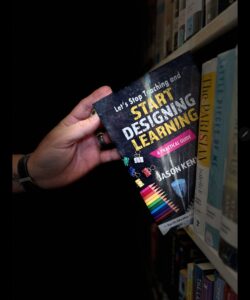Sometimes the way we try to figure out some of the root causes of the challenges we face at school reminds me of the old street hustle you may have experienced in person in a big city or have seen in the movies. You know the one I am talking about with the nutshells and the small ball or pea. No matter how closely you watch the person’s hands, no matter how sure you are of the exact location of the ball, when you make your final choice it still ends up nothing more than a lucky (or unlucky) guess. Just like the street game, we can walk away feeling defeated and having wasted a lot of money on programs, interventions and resources in the process.
Now let’s relate this to what might be happening in schools. We are looking closely at data, demographics, achievement and several other factors very closely, pouring so much time, energy and concentration into it. Schools are also spending a great deal of money during this guessing game as well. In the end, more often than not, they walk away experiencing the same sense of defeat and having spent a lot of money in the process. So, why do we still insist on playing this guessing game when the answer is right in front of us?
What is the answer? Fix Tier 1 learning. You may ask, “How does that make any difference in schools looking for solutions to issues like achievement gaps, behavior problems, performance and all those other challenges we face?” It’s simple. You cannot identify the cause of any of these issues without first having a solid Tier 1 as a base for all learners to experience their learning inside of. Tier 1 is delivered to all learners. It is the minimum standard of instruction that every single learner is exposed to. If this Tier 1 is subpar, missing pieces, minimally functioning or anything less than the well-oiled powerhouse for learning it should be, we have no idea what learners actually need in Tiers 2 and 3. We don’t know the root cause of low scores and low performance in our learners because Tier 1 is not up to a standard by which we can look at, reflect upon and readily identify areas of real need in our kids.
Designing a clearly defined, impactful and intentional Tier 1 framework for learning in your school helps eliminate so many factors and makes the guessing game a whole lot easier when it comes to figuring out exactly what our learners need from us. It would be like playing the street hustle again, but this time it is a little different. This time, instead of nutshells, the game is played using clear, plastic cups. This makes watching, examining and choosing so much easier, and more accurate, in the end. We can readily see where the choice lies, underneath a clear cup. No guessing involved. We watch all the movements, no matter how stealthy and quick, and still in the end we can correctly identify the need. Will you still need to spend money on programs, interventions and resources? Sure, those services are necessary. However, schools will not have to spend nearly as much money, nor expend on the time, energy, effort and monitoring as they did prior to making Tier 1 everything it should be.
Bottom line: Take the guesswork out of what’s going on with the learning in your school. Design a high quality Tier 1 to be the basic instruction received by all learners that holds all to high expectations, allows equitable access to learning, and prepares all to engage in a task producing evidence that the learning of the day occurred. Stop taking a shot in the dark, risking a lot of hard work, time and money. Tier 1 is the clear choice.


